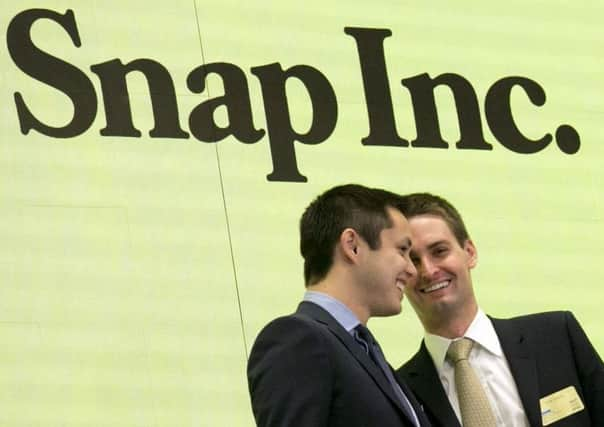John McLellan: Can Snapchat make its mark in advertising?


With a projected market capitalisation of more than 40 times its sales at around $20 billion, it’s not hard to see why.
But as is often the way with tech shares, investors piled in and even though in 2016 it raised only $400 million of revenue and made a $500m loss, the share price surged 44 per cent on launch. However, the critics were not silenced for long and by the end of last month the price had fallen below the initial public offering price, and it is now trading at around $13.70.
Advertisement
Hide AdAdvertisement
Hide AdThe market for Snapchat’s disappearing message-sharing app is almost entirely made up of millennials, and as the 20-somethings turn into 30-somethings the normal presumption would be that incomes would increase, lifestyles would settle and consumption increase. Backed up with detailed knowledge about their habits from social media activity, in theory they should be ideal targets for advertisers.
This may not be as safe to assume as it was in the past, certainly in the UK where lower incomes and problems with home ownership mean young adults are less likely to be better off than their parents, although they still represent fertile ground.
So last week, Sir Martin Sorrell, chief executive of global advertising giant WPP, announced his firm would be doubling its investment in Snapchat this year and the share price duly lifted. Spending $200m will certainly make a big difference to the profit and loss account, but it will need a lot more where that came from to reward those initial investors.
It might be small beer compared to the $6bn WPP spends on Google, or the $2bn it puts Facebook’s way, but what will excite investors is Sorrell’s expectation that Snapchat will be a third force in social media advertising.
That, however, is bad news for other advertising and marketing channels if spending with the big two is maintained. If the social media duopoly which is smashing other businesses reliant on advertising becomes a triopoly, it would be devastating, so the challenge is to demonstrate that Snapchat is an alternative to Google and Facebook, not another reason to spend less on TV, radio and print.
• In last week’s column I said the £200,000 damages awarded to Tommy Sheridan in his defamation case had not been paid because of his subsequent perjury conviction. However, following the Supreme Court’s refusal earlier this year to hear an appeal against the Court of Session’s decision to uphold the defamation ruling, News UK has now paid the money.
• John McLellan is director of the Scottish Newspaper Society and a City of Edinburgh Conservative councillor